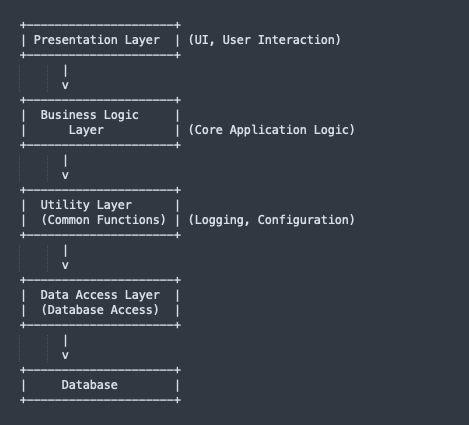Exploring the Advantages of a Utility Layer in Layered Architecture Design
Introduction
In the realm of software architecture, adopting a layered structure is akin to laying a firm foundation for a building—it's essential for long-term stability and functionality. Among these layers, the utility layer often flies under the radar yet plays a crucial role in enhancing the system's efficiency and maintainability. This layer, typically embedded within the architecture, acts as a shared resource, distributing common services and functions that are essential across various parts of the application. This blog post delves deep into the myriad advantages of integrating a utility layer into your architecture design, showcasing why it's a savvy strategy for any software development project.
Enhanced Code Reusability
The utility layer is the Swiss Army knife of software architecture. By centralizing common functionalities like logging, data handling, and validation routines, it eliminates the need to duplicate code across different parts of the application. This not only reduces the overall codebase size but also simplifies updates and bug fixes—change it once, and you update everywhere it's used. Such reusability fosters a more efficient development process and leads to a cleaner, more manageable code structure.
Simplified Maintenance
Imagine having all your tools neatly arranged in a toolbox. Similarly, a utility layer organizes all shared services and utilities in one accessible location, making it easier for developers to find, update, and manage common functionalities. This organization significantly cuts down on the time spent on routine maintenance tasks and troubleshooting, especially in complex systems where quick access to these utilities can dramatically speed up the process of diagnosing and resolving issues.
Improved Scalability
As applications grow, their infrastructure must evolve to accommodate new functionalities and higher volumes of data. The utility layer plays a pivotal role in this scalability. By isolating shared functionalities, it allows for targeted scaling of services that are under the most strain, without impacting other areas of the application. This means you can optimize or scale specific services independently as your application's demands grow.
Consistency Across the Application
Consistency is key in any enterprise application, not just for code quality but also for the user experience. The utility layer ensures that common functionalities behave consistently across the application, providing a uniform experience for users and maintaining a standard approach for developers. For instance, if the utility layer handles all date and time conversions, every module of your application will present date and time information in a consistent format, reducing user confusion and enhancing the overall reliability of the application.
Decreased Dependency Coupling
Reducing dependencies between modules makes an application easier to modify and test. The utility layer helps achieve this by acting as a mediator that provides necessary services without creating direct dependencies between different application components. This separation of concerns not only makes individual modules less complex but also enhances their portability and testability.
Focused Module Development
With a utility layer in place, developers can focus more on the unique aspects of their specific module rather than worrying about the implementation of common features. This focus can lead to more innovative developments within the modules, as developers are not bogged down by redundant tasks like reimplementing a logging or authentication mechanism.
Conclusion
Incorporating a utility layer into a layered architecture design offers significant advantages, from enhancing code reusability to simplifying maintenance and ensuring consistency throughout the application. It allows developers to build more robust, scalable, and efficient systems by centralizing common tasks and services. For software architects and developers looking to optimize their application architecture, considering the strategic implementation of a utility layer might just be the key to unlocking a more streamlined and effective development process.
This deeper understanding of the utility layer's advantages illustrates its indispensable role in modern software architecture. It's not just about making life easier for developers—it's about building a foundation that supports sustainable, efficient growth and operation of software systems.
If you have more questions about layer architecture or need specific examples of utility layer implementations, feel free to reach out or comment below!
